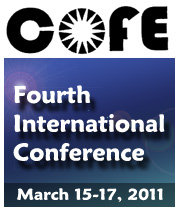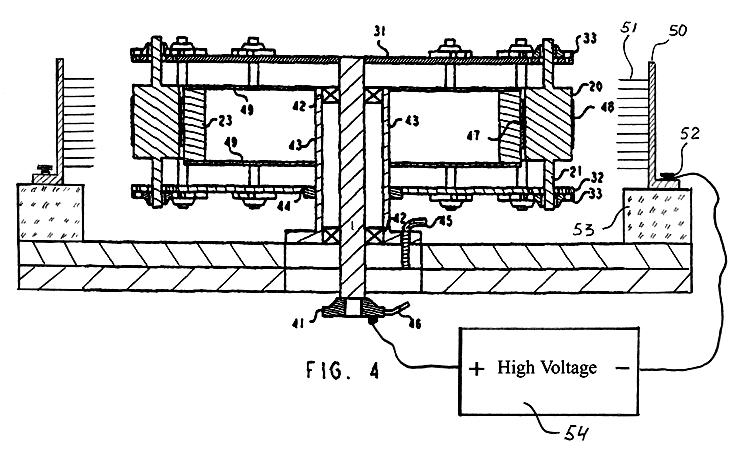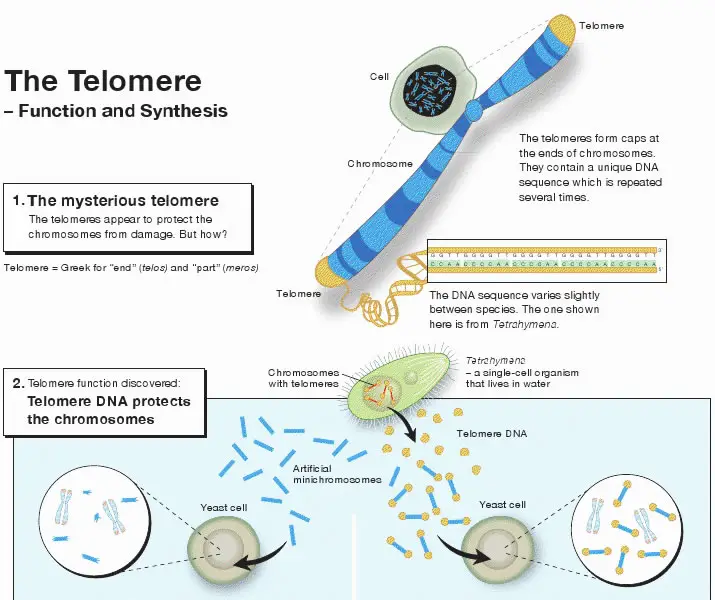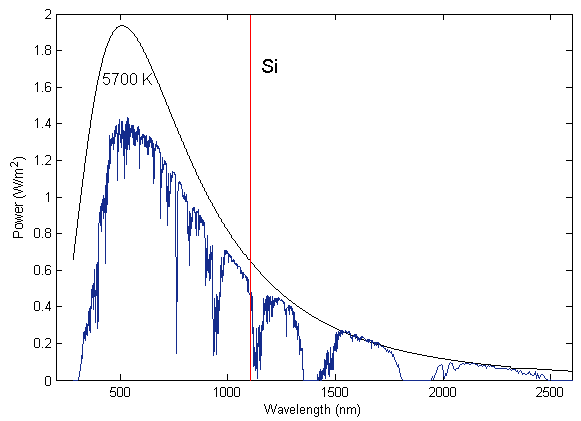Subject: Energy
Invention Media stories that have been overlooked
- sent in by Elliott Maynard, IRI Advisory
Board
Dear
friends,
The exciting, clean energy
inventions reported in the major media articles
below could easily transform our world within just
a few years. These amazing inventions are ultra
green and renewable. Concise summaries of each
fascinating media article are given, with links
provided to the full original article.
Big oil companies and the power elite
don't want us to know about these incredible
energy breakthroughs. They will not likely support
inventions which could seriously erode their huge
profits and power. A personal friend of mine who
is a genius inventor came up with an amazing
energy invention a few years ago. He had a $7
million company, and I personally witnessed how he
was attacked and shut down by powerful interests.
None of these amazing inventions are
receiving the front page coverage they deserve.
Yet when you consider them all together, it is
clear that given the necessary funding, one or
more of these energy inventions could literally
transform our world. What we need now is for the
public and politicians to be informed so that
pressure will build to support these exciting
projects. Please help to spread the word. For how
to do this, and for other great links on this
topic, see the " What you can do" section below
these articles. Thanks for caring.
With very best
wishes,
Fred Burks for PEERS and the WantToKnow.info Team
Former language interpreter
for Presidents Bush and
Clinton
**************
The Bloom Box: An Energy Breakthrough?
2010-02-18, CBS 60 Minutes
http://www.cbsnews.com/stories/2010/02/18/60minutes/main6221135.shtml
In the world of energy, the Holy Grail is a power source that's inexpensive and clean, with no emissions. Over 100 start-ups in Silicon Valley are working on it. One of them, Bloom Energy, is about to make public its invention: a little power-plant-in-a-box they want to put literally in your backyard. You'll generate your own electricity with the box and it'll be wireless. The idea is to one day replace the big power plants and transmission line grid. K.R. Sridhar ... says he knows it works because he originally invented a similar device for NASA. He really is a rocket scientist. He invented a new kind of fuel cell, which is like a very skinny battery that always runs. Sridhar feeds oxygen to it on one side, and fuel on the other. The two combine within the cell to create a chemical reaction that produces electricity. There's no need for burning or combustion, and no need for power lines from an outside source. "It's cheaper than the grid, it's cleaner than the grid." Twenty large, well-known companies have quietly bought and are testing Bloom boxes. The first customer was Google. Four units have been powering a Google datacenter for 18 months. They use natural gas, but half as much as would be required for a traditional power plant. John Donahoe, eBay's CEO, says its five boxes were installed nine months ago and have already saved the company more than $100,000 in electricity costs. eBay's boxes run on bio-gas made from landfill waste, so they're carbon neutral. "In five to ten years, we would like to be in every home." [Sridhar] said a unit should cost an average person less than $3,000.
2,757.1
MPG Achieved at 2009 Shell Eco-marathon Americas
2009-04-19, CNBC
News
http://classic.cnbc.com/id/30287740
Distance,
not speed, was the goal this weekend on the track
at the 2009 Shell Eco-marathon Americas(R), a
challenge for students to design, build and test
fuel-efficient vehicles that travel the farthest
distance using the least amount of fuel. This
year, more than 500 students from North and South
America were on hand to stretch the boundaries of
fuel efficiency. So who came out on top? The
student team from Laval University, with an
astonishing 2,757.1 miles per gallon, equivalent
to 1,172.2 kilometres per liter, won the grand
prize in the "Prototype" category. And in the
"UrbanConcept" category - new to the Americas
event this year - the team from Mater Dei High
School took the grand prize by achieving 433.3
mpg, equivalent to 184.2 km/l. With 44
participating teams at track competition was
steep. This year's challenge brought together a
number of returning teams determined to beat the
2,843 mpg (1,208 km/l) record set by Mater Dei
High School (Evansville, Ind.) in 2008, combined
with a number of new teams adding fresh innovation
and vehicle designs to the competition. "The Shell
Eco-marathon is a platform for students to let
their imaginations run wild," said Mark Singer,
global project manager for the Shell Eco-marathon.
"By encouraging these students to build vehicles
with greater energy efficiency, we hope this will
help inspire others; and together we can find
solutions that will help meet the global energy
challenge."
Note: If the above links fails,
this article is also available on the Shell
website at this link. Why so little media
attention to this most exciting race for top gas
mileage? And if high school students can build a
car that gets over 400 mpg, what's up with
Detroit? Could big business be suppressing, or at
the very least ignoring these inspiring inventions
some of which use clean, green, and renewable
energy sources?
The
Prophet of Garbage
Popular
Science - March 2007 Issue
http://www.popsci.com/popsci/science/873aae7bf86c0110vgnvcm1000004eecbccdrcrd.
The
Plasma Converter can consume nearly any type of
waste from dirty diapers to chemical weapons
by annihilating toxic materials in a process
called plasma gasification. A 650-volt current
passing between two electrodes rips electrons from
the air, converting the gas into plasma. The
plasma arc is so powerful, it disintegrates trash
into its constituent elements by tearing apart
molecular bonds. The system is capable of breaking
down pretty much anything except nuclear waste.
The only by-products are an obsidian-like glass
[and] a mixture of primarily hydrogen and carbon
monoxide that can be converted into a variety of
marketable fuels, including ethanol, natural gas
and hydrogen. Perhaps the most amazing part of the
process is that its self-sustaining. Once the
cycle is under way, the 2,200°F syngas is fed into
a cooling system, generating steam that drives
turbines to produce electricity. About two thirds
of the power is siphoned off to run the converter;
the rest can be used on-site for heating or
electricity, or sold back to the utility grid.
Even a blackout would not stop the operation of
the facility. New York City is already paying an
astronomical $90 a ton to get rid of its trash.
According to Startech, a few 2,000-ton-per-day
plasma-gasification plants could do it for $36.
Sell the syngas and surplus electricity, and you
actualually net $15 a ton. But the decision-making
bureaucracy can be slow, and it is hamstrung by
the politically well-connected waste-disposal
industry. Startech isnt the only company using
plasma to turn was waste into a source of clean
energy. A handful of start-ups Geoplasma,
Recovered Energy, PyroGenesis, EnviroArc and
Plasco Energy among others have entered the
market.
Note: Why isn't this
amazing, proven machine and technology making
front page headlines? Read the exciting full
article to find how it is already being used. For
why you don't know about it, click here.
Researcher
sets saltwater on fire
2007-11-14, CNN
http://edition.cnn.com/2007/TECH/science/11/14/saltwater.fire/
Last
winter, inventor John Kanzius was already
attempting one seemingly impossible feat --
building a machine to cure cancer with radio waves
-- when his device inadvertently succeeded in
another: He made saltwater catch fire. TV footage
of his bizarre discovery has been burning up the
blogosphere ever since, drawing crackpots and
Ph.D.s alike into a raging debate. Can water burn?
And if so, what good can come of it? Some people
gush over the invention's potential for
desalinization or cheap energy. Briny seawater,
after all, sloshes over most of the planet's
surface, and harnessing its heat energy could
power all sorts of things. Skeptics say Kanzius's
radio generator is sucking up far more energy than
it's creating, making it a carnival trick at best.
For now, Kanzius is tuning out the hubbub.
Diagnosed with leukemia in 2002, he began building
his radio-wave blaster the next year, soon after a
relapse. If he could seed a person's cancerous
cells with nanoscopic metal particles and blast
them with radio waves, perhaps he could kill off
the cancer while sparing healthy tissue. The
saltwater phenomenon happened by accident when an
assistant was bombarding a saline-filled test tube
with radio waves and bumped the tube, causing a
small flash. Curious, Kanzius struck a match. "The
water lit like a propane flame," he recalls.
"People said, 'It's a crock. Look for hidden
electrodes in the water,' " says Penn State
University materials scientist Rustum Roy, who
visited [Kanzius] in his lab in August after
seeing the feat on Google Video. A demo made Roy a
believer. "This is discovery science in the best
tradition," he says. Meanwhile, researchers at MD
Anderson Cancer Center in Houston and the
University of Pittsburgh Medical Center have made
progress using Kanzius's technology to fight
cancer in animals. They published their findings
last month in the journal Cancer.
BlackLight's
physics-defying promise: Cheap power from water
2008-07-02, CNN
Money
http://money.cnn.com/2008/07/01/smallbusiness/blacklight.fsb/index.htm
Imagine
being able to convert water into a boundless
source of cheap energy. That's what BlackLight
Power, a 25-employee firm in Cranbury, N.J., says
it can do. The only problem: Most scientists say
that company's technology violates the basic laws
of physics. Such skepticism doesn't daunt Dr.
Randell Mills, a Harvard-trained physician and
founder of BlackLight, who recently claimed that
he has created a working fuel cell using the
world's most pervasive element: the hydrogen found
in water. Mills says he has a market-ready
product: a fuel cell that produces a chemical
reaction to alter hydrogen atoms. The fuel cell
releases heat that turns water into steam, which
drives electric turbines. The working models in
his lab generate 50 kilowatts of electricity -
enough to power six or seven houses. But these,
Mills says, can be scaled [up] to drive a large,
electric power plant. The inventor claims this
electricity will cost less than 2 cents per
kilowatt-hour, which compares to a national
average of 8.9 cents. Mills developed the patented
cocktail that enables the reaction - a solid fuel
made of hydrogen and a sodium hydride catalyst -
only a year ago. (He recently posted instructions
on the company's Web site). Now that the device is
ready for commercialization, he says, BlackLight
is negotiating with several utilities and
architecture and engineering firms. The business,
Mills says, has attracted $60 million in funding
from wealthy individuals, investment firms ... and
it is no longer seeking money. BlackLight's board
of directors reads like a Who's Who of finance and
energy leaders.
Cold
Fusion Is Hot Again
2009-04-19, CBS News
http://www.cbsnews.com/stories/2009/04/17/60minutes/main4952167.shtml
Twenty
years ago it appeared, for a moment, that all our
energy problems could be solved. It was the
announcement of cold fusion - nuclear energy like
that which powers the sun - but at room
temperature on a table top. It promised to be
cheap, limitless and clean. Cold fusion would end
our dependence on the Middle East and stop those
greenhouse gases blamed for global warming. It
would change everything. But then, just as quickly
as it was announced, it was discredited. So
thoroughly, that cold fusion became a catch phrase
for junk science. Well, a funny thing happened on
the way to oblivion - for many scientists today,
cold fusion is hot again. "We can yield the power
of nuclear physics on a tabletop. The potential is
unlimited. That is the most powerful energy source
known to man," researcher Michael McKubre told 60
Minutes correspondent Scott Pelley. McKubre says
he has seen that energy more than 50 times in cold
fusion experiments he's doing at SRI
International, a respected California lab that
does extensive work for the government. McKubre is
an electro-chemist who imagines, in 20 years, the
creation of a clean nuclear battery. "For example,
a laptop would come pre-charged with all of the
energy that you would ever intend to use. You're
now decoupled from your charger and the wall
socket," he explained. The same would go for cars.
"The potential is for an energy source that would
run your car for three, four years, for example.
And you'd take it in for service every four years
and they'd give you a new power supply," McKubre
told Pelley.
Fusion's
Ups and Downs
2010-03-23,
MSNBC
http://cosmiclog.msnbc.msn.com/archive/2010/03/23/2237165.aspx
This
week, scientists gathered at the American Chemical
Society's spring meeting in San Francisco to turn
the spotlight on a highly unorthodox path: the
effect known as cold fusion. This year's session
featured nearly 50 presentations - including
reports on batteries and bacteria that appear to
exhibit the cold-fusion effect. Back in 1989, cold
fusion was heralded as a simple, inexpensive way
to get a power-generating fusion reaction on a
desktop. But when the experimental results
couldn't be reproduced, the researchers were
driven into obscurity [and] the term "cold fusion"
became synonymous with quackery. Chemists,
however, have kept up their interest in the
effect. Rick Nebel [has headed] up a handful of
researchers following the less-traveled path to
fusion at EMC2 Fusion Development Corp. EMC2
recently created a buzz in the fusion underground
by reporting on its Web site that it successfully
completed a series of experiments to "validate and
extend" earlier results. The company is now using
a $7.9 million contract from the U.S. Navy to
build a bigger test machine. Nebel and his
colleagues are now seeking contributions to fund
the development of what they say would be a
100-megawatt fusion plant - a "Phase 3" effort
projected to cost $200 million and take four
years. "Successful Phase 3 marks the end of fossil
fuels," the Web site proclaims.





















